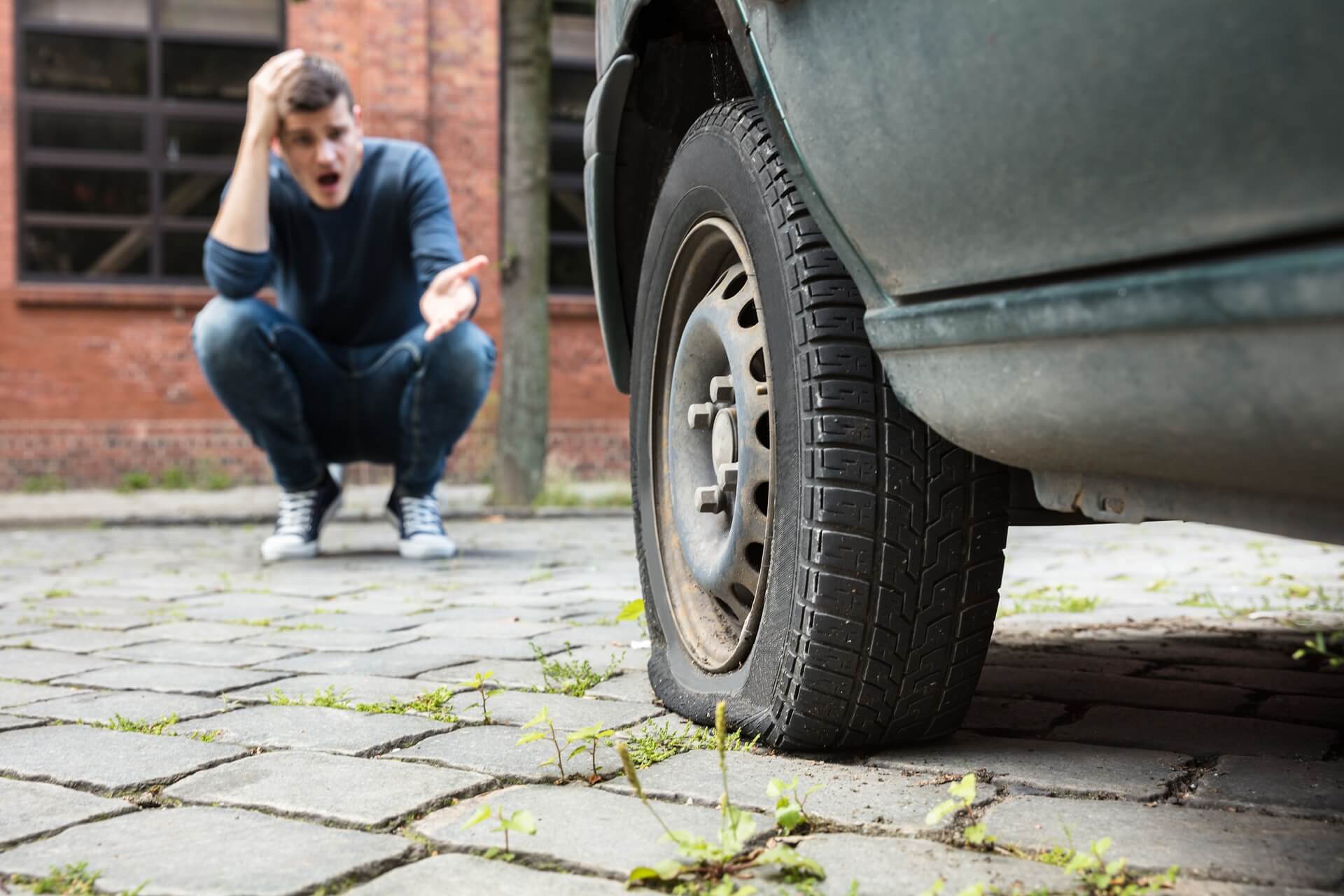Imagine this situation: you’re enjoying a relaxing car drive. It can be a weekend trip that you have planned ahead or a Monday morning commute to work. Everything’s going fine, and all of a sudden, you notice your car behaving differently. And just like that, your journey is disrupted by a flat car tyre.
Throughout history, we have been relying on spare tyres, jacks and even a bit of luck to get moving again. But technology is developing really fast, and even our cars are becoming smarter and more connected, and so are the solutions for flat car tyres.
Today, we have innovations like tyre pressure monitoring systems (TPMS), mobile repair apps, run-flat tyres, etc. – and all of them are transforming how we handle punctures. This article will explore how technology is changing the way we deal with flat car tyres.
Challenges of Having a Flat Car Tyre
Even a short commute to work can become a stressful situation with a flat car tyre. The first challenge that pops up is safety: you’re stuck on the roadside, it could be night or a busy highway, and it puts both you as a driver and your passengers at risk.
A lot of people will also face the issue of a lack of knowledge or confidence when it comes to changing a flat tyre, and that makes the situation even more stressful and overwhelming.
Flat car tyres also come with challenges such as time and inconvenience. They can cause delays, make you late for work, appointments, or even ruin your travel plans. If you don’t have a spare tyre or the tools available, it can quickly escalate into a call for roadside assistance.
Besides all this, a flat car tyre is a financial challenge too – paying for a repair, buying a replacement tyre, paying the cost of towing, etc. – all of these issues can become more expensive than you expect.
Tyre Pressure Monitoring Systems (TPMS)
TPMS is a safety feature that alerts you when one or more of your tyres are significantly under-inflated. It allows you to monitor air pressure in real time, helping you reduce the risk of a flat car tyre, but also improving fuel efficiency and extending tyre life.
These systems first appeared during the 1980s in luxury European cars, with many sources citing the Porsche 959 as one of the earliest car models that adopted TPMS. During the 1990s, this technology became more popular as many car manufacturers focused on improving safety.
Today, TPMS is standard in most modern vehicles and is a very helpful early warning system that can prevent stressful situations such as flat car tyres.
Run-Flat Tyres
Run flat tyres allow you to keep driving (usually between 50 and 80km) even after losing air pressure, giving you enough time to reach a repair shop or a safe spot to stop your car instead of having to stop immediately.
This concept dates back to the 1930s, with Michelin and Goodyear among the pioneers, but it wasn’t until the 1980s and 1990s that this technology gained proper momentum, especially with BMW, which was one of the first manufacturers that start fitting run-flat tyres to its models.
The secret behind their durability lies in reinforced sidewalls or internal support rings that have the ability to temporarily carry the weight of a car even without air. While these tyres are more expensive, they initially provide you peace of mind as a driver but also reduce the need for spare tyres and save boot space.
Sealants and Self-Sealing Tyres
Tyre sealants represent another solution for avoiding flat tyres in that they can automatically close small punctures (up to 5mm) so that drivers can keep driving. Tyre sealants come in two forms: as an aftermarket product, which is basically a liquid that you inject into the tyre to coat the inner surface, or as a built-in feature in a self-sealing tyre, which is actually a viscous sealant under the tread which instantly moves into the hole, preventing air from leaking.
The main benefit of sealant and self-sealing tyres is the convenience – you don’t have to stop on the roadside and worry about how you’re going to change a tyre. Instead, you can keep driving almost immediately, without disrupting your travel plans.
The Future
No matter how big an inconvenience flat car tyres are, the technology is certainly changing the way we deal with them, from warning us early with TPMS to helping us keep moving with run-flat or self-sealing tyres.
Besides all of these solutions, there are now mobile apps that are changing the way we deal with road assistance as well. These apps connect you with tyre services with only one tap, giving them real-time tracking with GPS and making your breakdowns less stressful. Together, all of these solutions mean that flat car tyres no longer have to ruin your day.





